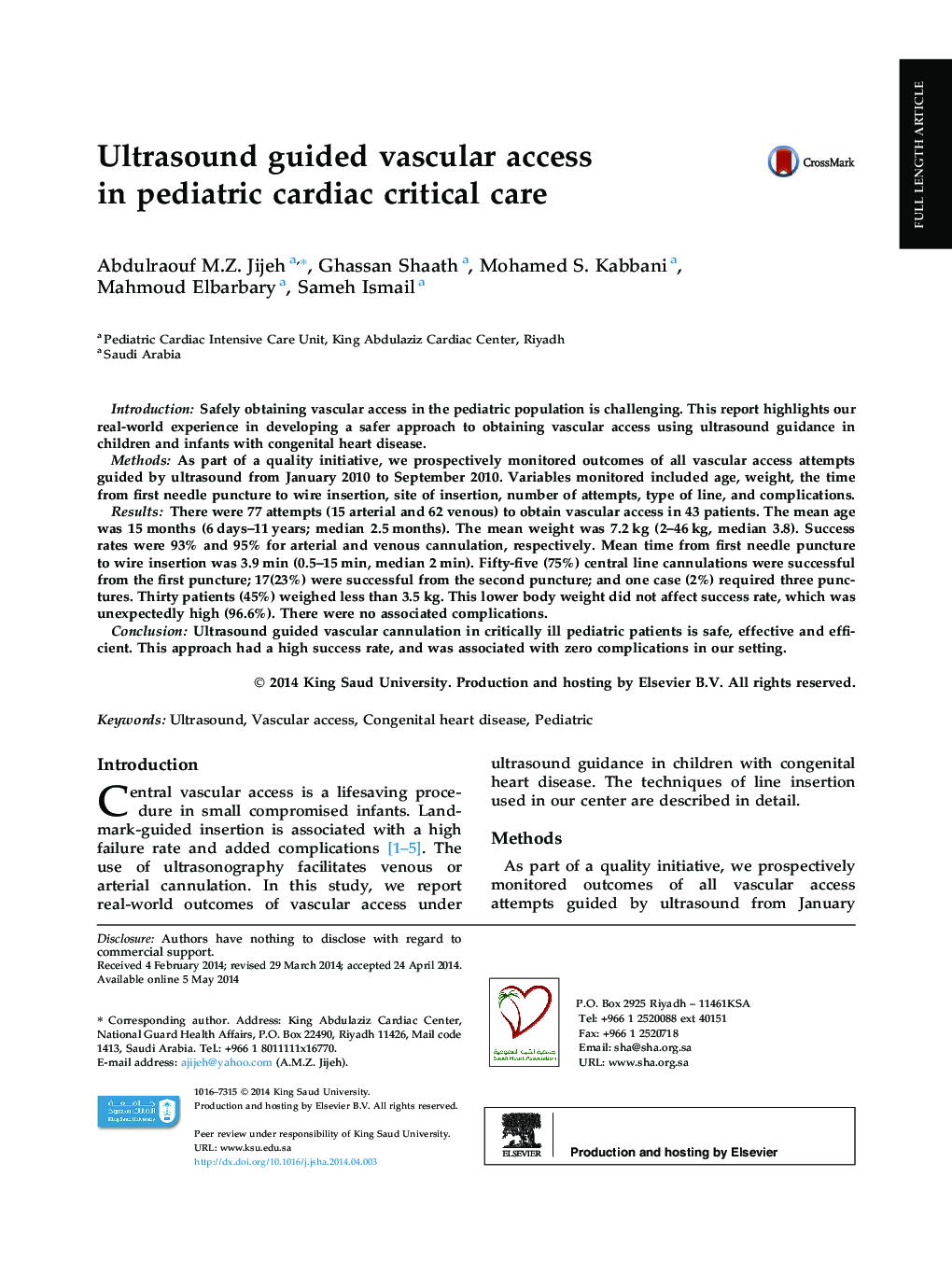| Article ID | Journal | Published Year | Pages | File Type |
|---|---|---|---|---|
| 2978166 | Journal of the Saudi Heart Association | 2014 | 5 Pages |
IntroductionSafely obtaining vascular access in the pediatric population is challenging. This report highlights our real-world experience in developing a safer approach to obtaining vascular access using ultrasound guidance in children and infants with congenital heart disease.MethodsAs part of a quality initiative, we prospectively monitored outcomes of all vascular access attempts guided by ultrasound from January 2010 to September 2010. Variables monitored included age, weight, the time from first needle puncture to wire insertion, site of insertion, number of attempts, type of line, and complications.ResultsThere were 77 attempts (15 arterial and 62 venous) to obtain vascular access in 43 patients. The mean age was 15 months (6 days–11 years; median 2.5 months). The mean weight was 7.2 kg (2–46 kg, median 3.8). Success rates were 93% and 95% for arterial and venous cannulation, respectively. Mean time from first needle puncture to wire insertion was 3.9 min (0.5–15 min, median 2 min). Fifty-five (75%) central line cannulations were successful from the first puncture; 17(23%) were successful from the second puncture; and one case (2%) required three punctures. Thirty patients (45%) weighed less than 3.5 kg. This lower body weight did not affect success rate, which was unexpectedly high (96.6%). There were no associated complications.ConclusionUltrasound guided vascular cannulation in critically ill pediatric patients is safe, effective and efficient. This approach had a high success rate, and was associated with zero complications in our setting.
